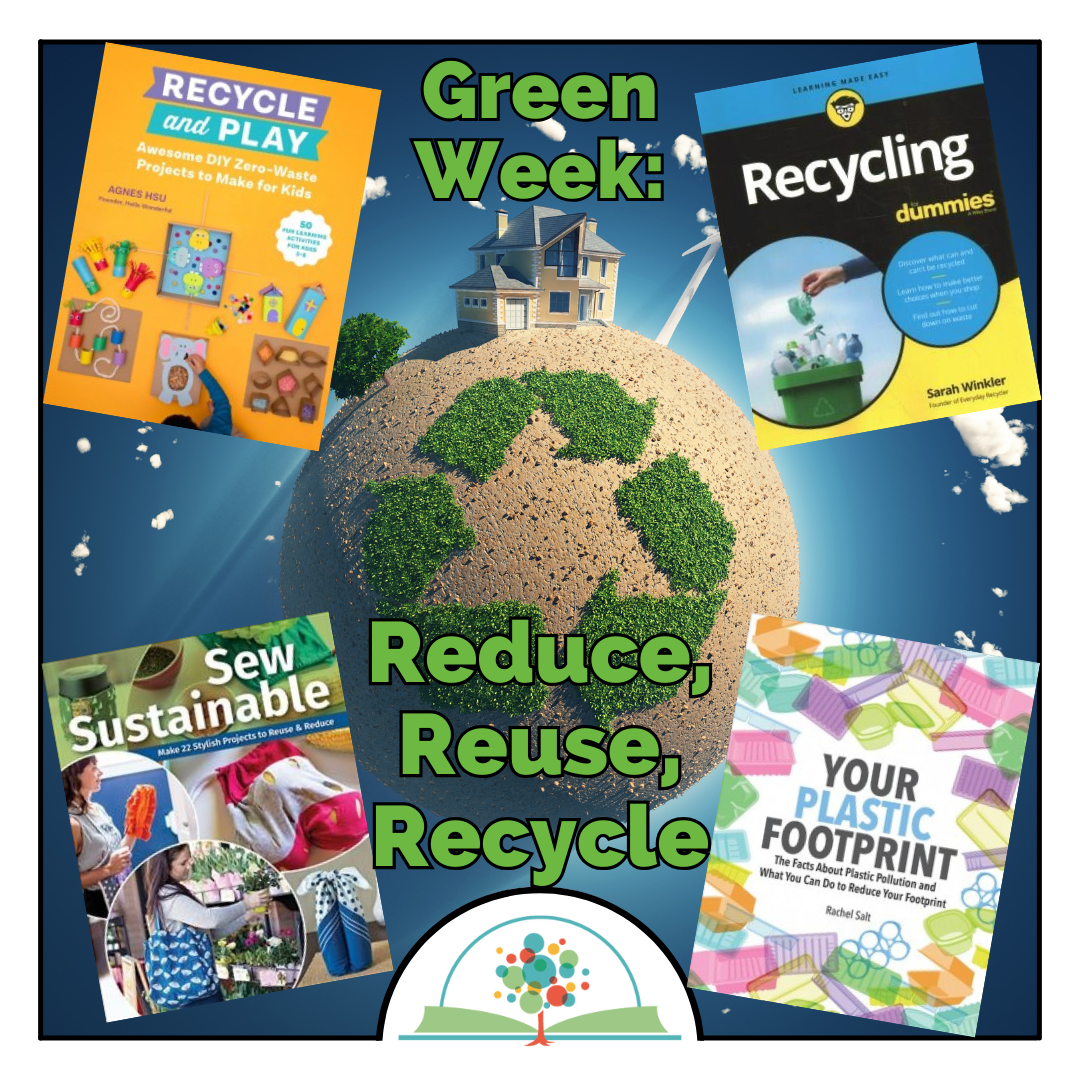
21 Apr Green Week: Reduce, Reuse, Recycle
Every spring, we celebrate Green Week to promote sustainability and educate people about the environment. This year, Green Week is April 20-26. We compiled a list of books below that focus on the three “R”s of the environment: reducing, reusing, and recycling. Click on a book title to place a hold on a physical copy through the Evergreen catalog.
Recycle and Play: Awesome DIY Zero-Waste Projects to Make for Kids, Agnes Hsu
With Recycle and Play, learn how to transform cardboard, bubble wrap, lids, containers, egg cartons, and other things that might otherwise end up in a landfill into hours of engaging play at home. The fun, process-oriented projects invite children to be creative, explore their senses, develop skills, and discover how things work, all while reinforcing the importance of reducing waste as part of a sustainable lifestyle.
Recycling for Dummies, Sarah Winkler
Recycling For Dummies minimizes confusion around what can and cannot be recycled. This easy-to-follow manual breaks down recycling codes, symbols, and rules in a straightforward way that anyone can understand and apply. Readers will gain recycling insight and learn tips on reusing household items to reduce waste. It also guides consumers in making smarter choices to help preserve the planet for future generations.
Sew Sustainable: Make 22+ Stylish Projects to Reuse & Reduce
Practice sustainability in style! Sew Sustainable has more than 22 practical projects to use and reuse anywhere. From lunch bags and kitchen accessories to grocery bags and pouches, there are projects to use on the go and at home. For an added challenge, these projects can be created with fabrics and materials already on hand for a more significant impact. Readers will also become informed consumers with facts and resources about reducing, reusing, and recycling.
Your Plastic Footprint: The Facts About Plastic Pollution and What You Can Do to Reduce Your Footprint, Rachel Salt
Your Plastic Footprint educates readers about the origins and scope of the plastic problem, helps them measure its scale on an individual level, and then offers solutions on how to rethink and reduce plastic use. It also illuminates each individual’s impact with informative infographics and photos. The book is a must-read for every conscious consumer who is worried about the future of our planet and looking to reduce their plastic footprint.



